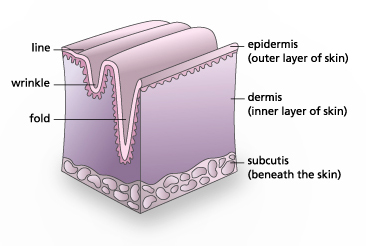Plastic Surgery and Cosmetic Surgeons
Breast Augmentation - Facelift and Liposuction
With aging, all skin cells begin to produce excess amounts of free radicals--unstable oxygen molecules that, under ideal circumstances, are removed by naturally occurring antioxidants within the skin's cells. In aging skin cells, antioxidants are in short supply. The free radicals generated are left unchecked and cause damage to cell membranes, proteins, and DNA. These free radicals eventually break down a protein substance in connective tissue (collagen) and release chemicals that cause inflammation in the skin. It is a combination of these cellular and molecular events that leads to skin aging and the formation of wrinkles, the AAD says.
As we get older, two components of our skin--collagen and elastin--degenerate, setting the stage for the appearance of wrinkles, creases, folds, and furrows. The breakdown of these components, accelerated by sun exposure and gravity, results in the sagging skin of old age. Illustration by Renée Gordon. Source: National Institute on Aging. Considerable research has been done to understand the aging process, and studies now show that products containing bioactive ingredients (those that interact with living tissues or systems) can benefit sun-damaged, discolored, and aging skin, giving consumers new choices for restoring |
